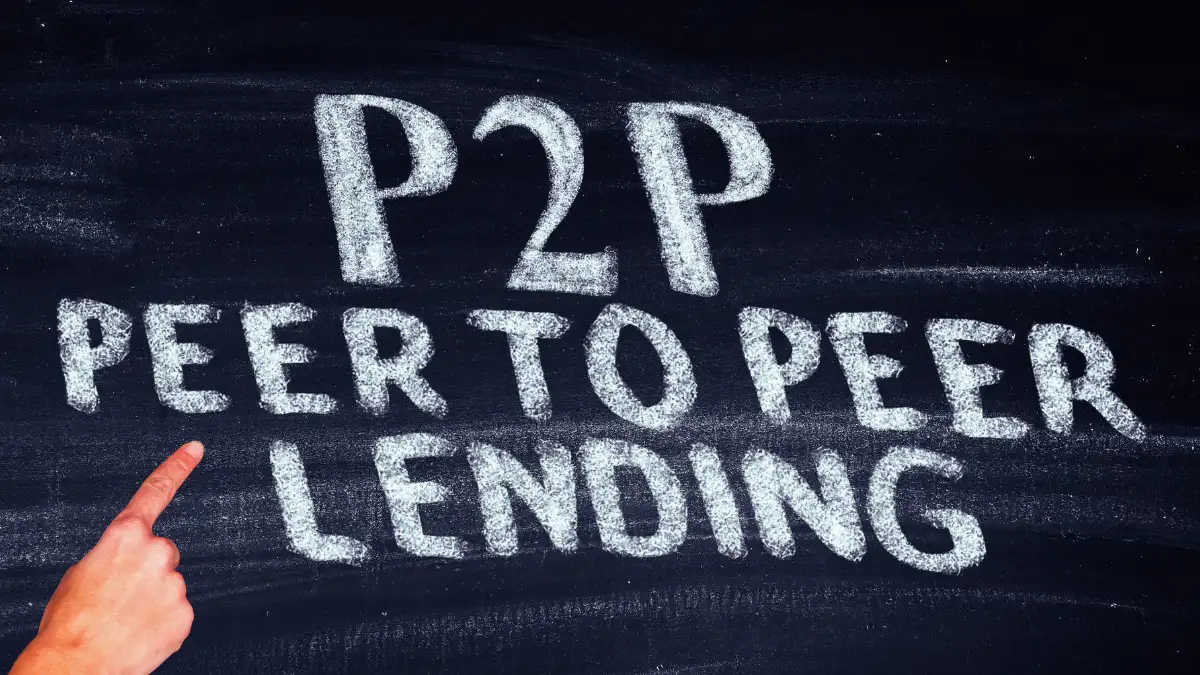Most people in their 40s panic about retirement savings while watching their single income stream slowly lose purchasing power.
You’re probably wondering if it’s too late to build real wealth when mortgage payments and family expenses consume every paycheck.
The truth is, your 40s offer the sweet spot for creating multiple income streams because you finally have the experience, connections, and capital that younger entrepreneurs lack.
After building nine different revenue sources over three years, I discovered which ones move the needle and which waste precious time. Here’s exactly how I prioritized them based on effort, returns, and scalability.
1. Freelance Consulting

Professional expertise becomes your most valuable asset when charging premium rates for specialized knowledge. Years of industry experience translate into solving complex business challenges that companies cannot handle internally.
Established consultants command hourly rates between $50 to $300+, with experienced professionals earning $5,000 to $20,000+ monthly.
Starting requires identifying your unique value proposition and building a compelling portfolio showcasing past achievements.
LinkedIn networking and industry connections provide warm leads, while platforms like Upwork help expand your reach. Many successful consultants begin offering free consultations to build testimonials and establish credibility quickly.
Building from scratch means leveraging existing relationships first. Former colleagues and professional networks become your initial client base.
Success depends on delivering exceptional results that generate referrals and repeat business. Consulting builds a strong personal brand opening doors to higher-paying projects and retainer contracts.
- Suitable for: Experienced professionals and industry experts
- Setup ease: Medium complexity
2. Rental Property Income

Real estate investment generates monthly cash flow while building long-term wealth through property appreciation. Location research becomes crucial for finding properties in high-demand rental areas.
Monthly rental income typically ranges from $500 to $3,000+ per property, with net cash flow after expenses averaging $200 to $1,500 monthly per unit.
Capital requirements often present the biggest hurdle, requiring down payments of 20-30% of property value.
Understanding local market conditions, rental yields, and neighborhood trends determines investment success. Many investors start with house hacking or partnering with others to reduce initial capital needs.
Starting from zero involves securing financing through conventional loans or investor partnerships. Learning landlord-tenant laws protects your investment while property management skills ensure smooth operations.
Rental properties appreciate over time, providing both passive income and capital gains potential for future property acquisitions.
- Suitable for: Investors with substantial capital seeking passive income
- Setup ease: High complexity
3. Dividend Stock Investing

Dividend-paying stocks provide regular income while potentially appreciating over time. Companies with strong dividend histories often represent stable, mature businesses offering 2% to 5% annual yields.
A $50,000 portfolio might generate $1,000 to $2,500 yearly in dividends, with reinvestment accelerating growth significantly.
Building a dividend portfolio requires patience and a systematic investing approach. Dollar-cost averaging helps reduce timing risks while diversification across sectors minimizes concentration risks.
Focus on dividend aristocrats ensures consistent payments even during market downturns.
Creating this stream from nothing starts with opening a brokerage account and learning fundamental analysis. Begin with small amounts to understand market dynamics before increasing investments.
Dividend investing builds a growing income stream that can eventually replace salary income through compounding returns over decades.
- Suitable for: Long-term investors comfortable with market risk
- Setup ease: Medium complexity
4. Creating an Online Course

Educational content creation leverages your expertise to help others while generating substantial revenue.
Course pricing varies from $20 to $200+ per enrollment, with successful courses earning $1,000 to $10,000+ monthly depending on marketing effectiveness and niche demand.
Course creation involves planning the curriculum, recording videos, and developing supplementary materials.
Platforms like Teachable, Udemy, or Kajabi handle technical aspects while you focus on content quality. Professional production values significantly impact student satisfaction and reviews.
Starting from zero requires validating demand through surveys or beta testing with small audiences. Basic recording equipment and editing software enable professional-looking content creation.
Courses generate passive income once created, with the potential for upselling coaching services or advanced courses to build diversified income streams.
- Suitable for: Educators and professionals with teachable skills
- Setup ease: Medium complexity
5. Writing and Self-Publishing eBooks

Digital publishing democratizes book creation, eliminating traditional publishing barriers and gatekeepers.
Amazon Kindle Direct Publishing reaches millions of readers worldwide, with earnings varying widely based on niche selection and marketing efforts.
Many authors earn $100 to $5,000+ monthly, while skilled freelance writers command approximately $23 per hour.
Writing requires discipline and consistency to complete manuscripts that readers want to purchase.
Professional editing and cover design significantly impact sales potential and reader reviews. Building an author platform through social media creates direct reader relationships.
Beginning writers should research popular topics and analyze successful books in their chosen niche. Starting with shorter books allows for testing market response before investing in longer works.
Successful books build credibility leading to speaking engagements, consulting opportunities, or course creation possibilities.
- Suitable for: Writers and experts in specialized topics
- Setup ease: Medium complexity
6. Affiliate Marketing

Content creators earn commissions by promoting products they genuinely use and recommend to their audiences.
Building trust becomes paramount for long-term success, with authentic recommendations consistently outperforming aggressive sales tactics.
Many successful bloggers earn $5,000 to $50,000 monthly through diversified affiliate streams.
Successful affiliate marketers create valuable content that naturally incorporates product mentions through blog posts, videos, and social media.
Email marketing provides direct communication channels for product recommendations. Growing an email list becomes crucial for sustainable income generation.
Building from scratch requires choosing a profitable niche and creating consistent, high-quality content.
Amazon Associates offers an easy starting point with millions of products available for promotion.
The Content Marketing Institute reports that content marketing overall has a strong ROI, with 70% of businesses achieving positive content marketing ROI and 92% of marketers recognizing content as a valuable asset for long-term ROI.
- Suitable for: Content creators and digital marketers
- Setup ease: Medium complexity
7. Dropshipping Business

E-commerce without inventory management appeals to entrepreneurs seeking lower startup costs and reduced risk.
Suppliers ship directly to customers, eliminating warehousing needs while maintaining profit margins typically between 10-30%.
Monthly earnings range from $500 to $10,000+ depending on product selection and marketing effectiveness.
Building an online store requires choosing reliable platforms like Shopify or WooCommerce.
Product research involves analyzing trends, competition, and profit margins rather than technical skills. Customer service excellence becomes crucial since you control the buying experience but not fulfillment.
Starting requires researching trending products and finding reliable suppliers who ship consistently. Testing products through social media advertising before committing to larger orders reduces risk.
Dropshipping teaches valuable eCommerce and digital marketing skills while requiring minimal upfront investment for scaling operations.
- Suitable for: Entrepreneurs and beginners in eCommerce
- Setup ease: Medium complexity
8. Creating a YouTube Channel

Video content creation offers multiple monetization opportunities beyond advertising revenue through sponsorships, affiliate marketing, and merchandise sales.
YouTube creators earn approximately $1 to $5 per 1,000 views, with channels maintaining 100,000+ subscribers often generating $2,000 to $20,000+ monthly.
Successful channels focus on specific niches rather than general topics, with consistency and audience engagement mattering more than production quality initially.
Understanding YouTube’s algorithm helps optimize content for discovery and increased viewership.
Starting from zero requires choosing your niche and creating a content calendar for consistent posting.
Simple recording gear and editing tools create professional-quality videos without breaking the bank.
YouTube builds a personal brand and audience that opens doors to partnerships and other media opportunities.
- Suitable for: Content creators comfortable appearing on camera
- Setup ease: Medium complexity
9. Peer-to-Peer Lending

P2P platforms connect investors directly with borrowers, potentially offering higher returns than traditional savings accounts.
Average returns range from 5% to 10% annually after accounting for defaults, with a $10,000 portfolio generating approximately $500 to $1,000 yearly income.
Understanding borrower risk profiles helps optimize returns while managing default risks effectively.
Most platforms provide risk ratings and historical performance data for informed decision-making. Reinvesting returns compound growth significantly over time.
Getting started involves registering on established platforms like LendingClub or Prosper with small initial investments.
Automated investing tools help diversify across multiple loans efficiently, reducing individual borrower risk.
Peer-to-peer lending platforms like Prosper typically offer investors returns that are higher than traditional fixed-income products such as savings accounts or government bonds, often in the 5% to 10% range annually after accounting for defaults and fees.
- Suitable for: Investors seeking passive income with moderate risk tolerance.
- Setup ease: Low complexity

